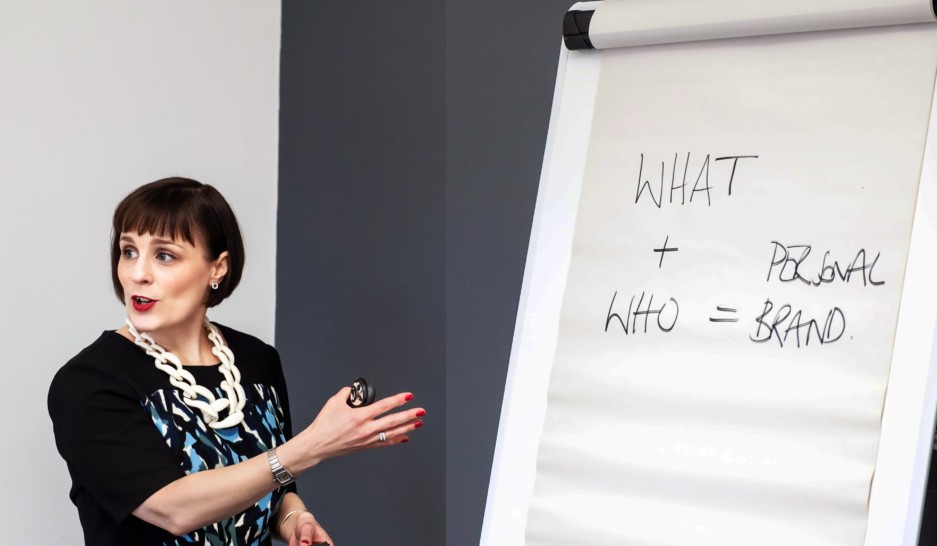Professional coach Jennifer Holloway began by describing what happens in our brains the first time we meet a person. She stepped through the process of our five senses: sight, hearing, touch, smell and, to a lesser extent, taste.
“The conscious part of the brain is proportionately small. When you meet someone for the first time, you say hello and shake hands, and unconsciously you are picking up signs and signals and information about the person.
“‘Do I like them?’, ‘Do I not like them?’ and ‘Do I need to be wary of them?’,” Holloway said.
Our sense of sight, the primary sense, checks out gender, age, height, skin colour, hair, clothes, facial expression and body language. Hearing picks up on accent, tone, volume and use of language. Touch assesses a handshake. Smell logs information such as smoking, perfume and food scents.
“It goes sight, sound, touch and smell in that order. You constantly take in clues and information. You make an assumption ‘ah, they are this type of person’, and then something happens to change that impression and you recalibrate.”
The ‘who?’ and ‘what?’
Our unconscious biases, which are formed through our lived experienced and the cultures and values we have absorbed during our lives, shape our impression of the person.
“Let’s say they are a smoker. The kind of assumptions people could make are that they’re unhealthy, lack self-control, have less money, maybe take more breaks during a working day. At the same time, smoking may have positive associations, such as sociability, catching up on the gossip and having fun.
“The point is that it’s very complicated. You might weigh up all the information and decide well actually I’m neutral about smokers.”
“That’s what is happening when someone is working you out. They’re asking, ‘What clues am I getting from their personal brand?’.”
A personal brand is made up of ‘what’ and ‘who’. The idea was first developed by author Tom Peters in his 1990s book, ‘The Brand You50: Fifty Ways To Transform Yourself From An Employee Into A Brand That Shouts Distinction, Commitment And Passion!’
‘What’ comprises knowledge, experience, companies worked for and sectors worked in. It’s what you get paid for.
‘Who’ is the part that people buy into and helps people to like you, respect you and trust you.
The six elements
The six elements of a personal brand are values, drivers and motivators, reputation, behaviours, and skills and strengths and image.
“If you want people to buy into you, your first job is to figure out ‘what am I selling?’” A personal brand is about what you offer and the values you stand for. It should reflect your public persona and not your private persona.
A well-developed personal brand clearly denotes what they will get on the inside of the packaging. Are you presenting the accurate packaging as to the sort of person you are?
* Values. These have a moral element and are what you think are the right or wrong things to do. Values can show up when you get cross about something — when your values have been contravened. If someone doesn’t thank you for holding open a door and you get very cross, then courtesy is your value.
* Drivers. What motivates you in your job and career. What makes you happy and what do you want out of it? Again, think of when you were least happy and that may indicate what you want.
“Some people may say I was forced to work as part of a team and I’d rather work by myself.” Common examples are recognition, progress, being part of a team, knowing you are valued, taking ownership and taking responsibility.
* Reputation. This is always built on other parts of the brand. “If you could dictate what people said about you, what would you have them say? Or, what would make you feel sick to your stomach if you overheard it?”
If ever you’ve felt angry or sick about some feedback, think about what it was. That’s the thing that matters to you.
* Behaviours. How you behave is an outward expression of your values. Your behaviours give you your personality and character – who you truly are. They’re what you say and do as an outward communication of your deeper values and beliefs.
* Skills and strengths. What are you great at? Think of you doing your job and compare yourself to your peers or other people who are doing that job. A skill is something you can learn and practice and get good at, such as analysing data. A strength is more like calmness in a crisis.
* Image. This is the packaging for your brand, how you look – clothes, body language, eye contact; how you sound – tone of voice, volume, language; and how you act. These are all the clues that people are picking up on, how your look, sound and act.
What the executive group learnt
- Work out exactly what you’re selling. Too few brands know exactly what their top qualities are before they present themselves to the world
- Be true to yourself. Be honest and authentic about your skills before you set out to create your brand
- Work out your values and career drivers. Things that make you angry give a strong steer of your values or feedback that really stung. Write them down
- Leave no stone unturned from social media like Linkedin to the signature on your work email and initial face to face impressions including a confident handshake to communicate who you are
















